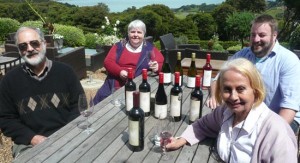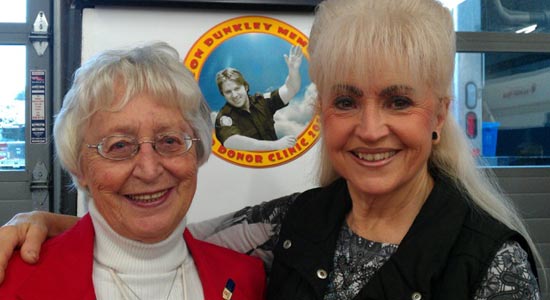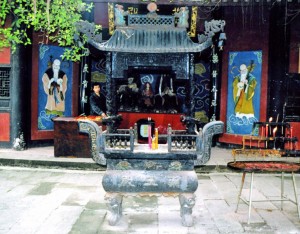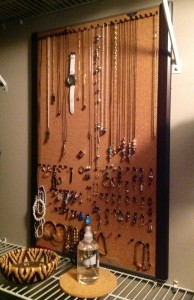The most famouse of the people who travelled to the Cariboo gold fields were thought to be those brave souls known as the Overlands of 1862. Most of them came from the west of Canada, but a few were from the east, the United States, and Britain. About two hundred gathered at Fort Garry, (Winnipeg, Manitoba). Some were to drop out, while others went home, or to prospect the Peace River. So, all in all, one hundred and sixty went on to the gold fields.
Women and children were not encouraged to make this trip, but twenty-seven year old Mrs. Catherine Schubert went with her husband Augustus, and their three young children. At Fort Garry groups were organized by Captain Thomas McMicking, and a committee of thirteen. On June 2 the first group of one hundred and ten animals (oxen and horses), ninety- seven Red River carts, and one hundred and thirty-six people left Fort Garry, followed by two other groups. They went overland on the regular route across the prairies to Fort Edmonton. They arrived at the Fort on July 2l, where they rested for eight days. And after exhanging carts for horses, pushed on to a trackless country, chopping trails through the forest. Finally, one month later they arrived at Tete Jaune Cache (three hundred and thirty-two km. north of Kamloops). A decision had to made while there. Should they follow the Fraser River to the mouth of Quesnel, or take an unknown route to the North Thomson River, and Fort Kamloops? Most decided to risk following the Fraser River. They built rafts and left on their journey of dangerous rapids and canyons.They reached the mouth of the Quesnel River on October 4.
The twenty people that chose The Thompson River route had to cut a trail to the river through unkown territory. Their trip down the Thompson River was a horrific ordeal. Their rafts were wrecked, supplies were lost. They almost starved to death. Finally, on October 11, they reached Fort Kamloops. The Irish lass, Mrs. Schubert, gave birth to her fourth child, Rose ,the following day.
Rose was the first child to be born in the interior of British Columbia.
Sadly, during the Fraser and Thompson River journeys, six people died. A miracle, really, considering what they went through.
Unfortunately, when the Overlanders arrived at their destinations, the Cariboo gold rush hadPassed its peak, and miners were going home. But some Overlanders stayed in British Columbia, and many, liked Captain McMicking, and his brother Robert enjoyed successful careers.
Mrs. Schubert’s German husband Augustus did not find gold after a long search. Nineteen years after their ordeal with the Overlanders, they purchased a farm in the Okanagan Valley.
It is of interest some of the Overlanders were Kamloops first settlers!
Margaret Moffatt, emarem@shaw.ca
 I am happy to report that I had less jet-lag, after my 14½ hr. overnight, direct, non-stop flight on Air N.Z. from Vancouver to Auckland N.Z. I also noticed that in the pressurized cabin, the white wines seemed to loose their flavour and the reds tasted more astringent, so I had a glass of the white West Brook Marlborough Gewürztraminer 2011 with its lemon aromatics. A bonus was that the tomato juice actually tasted sweeter in the higher altitude as well!
I am happy to report that I had less jet-lag, after my 14½ hr. overnight, direct, non-stop flight on Air N.Z. from Vancouver to Auckland N.Z. I also noticed that in the pressurized cabin, the white wines seemed to loose their flavour and the reds tasted more astringent, so I had a glass of the white West Brook Marlborough Gewürztraminer 2011 with its lemon aromatics. A bonus was that the tomato juice actually tasted sweeter in the higher altitude as well! However we were heading to Mudbrick Vineyard & Restaurant on Church Bay Road to first visit their Cellar Door for both standard & premium wine tastings with Tom French. Tom said that the vines were first planted in 1992 by the present owners Nick & Robyn Jones who now have 2 Waiheke vineyard sites. One at the Mudbrick Vineyard at Church Bay with the North Bay clay slopes & salty, sea-air influence and the other at Shepherds Point at Onetangi, within the Stony Ridge Valley, providing a different terroir.
However we were heading to Mudbrick Vineyard & Restaurant on Church Bay Road to first visit their Cellar Door for both standard & premium wine tastings with Tom French. Tom said that the vines were first planted in 1992 by the present owners Nick & Robyn Jones who now have 2 Waiheke vineyard sites. One at the Mudbrick Vineyard at Church Bay with the North Bay clay slopes & salty, sea-air influence and the other at Shepherds Point at Onetangi, within the Stony Ridge Valley, providing a different terroir. Friends and I regularly volunteer at Langley’s Murrayville mobile clinic.
Friends and I regularly volunteer at Langley’s Murrayville mobile clinic. By Chris & Rick Millikan
By Chris & Rick Millikan By Roxanne Griese
By Roxanne Griese